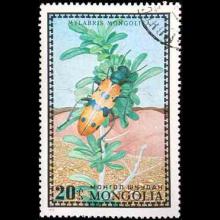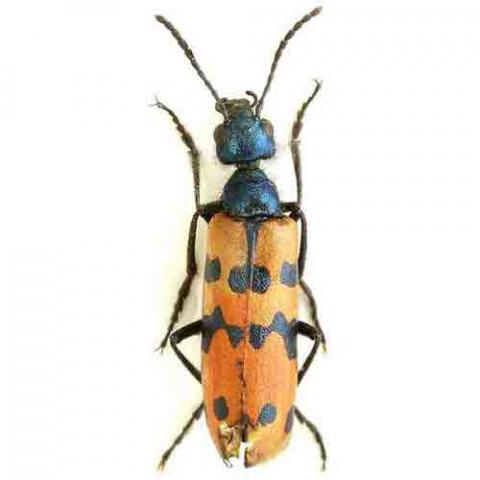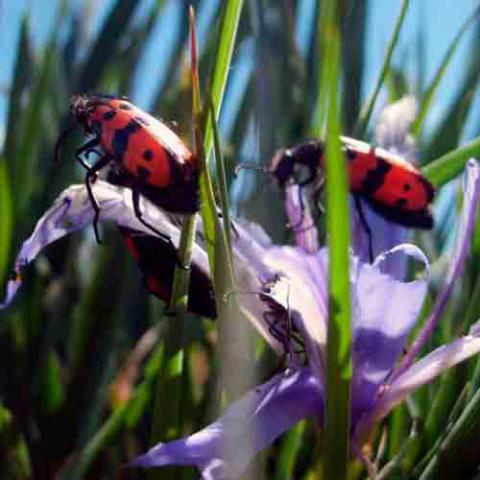NAMES
TAXONOMY
Mongolia
Issued:
Stamp:
Mylabris mongolica
Mongolia
Issued:
Stamp:
Mylabris mongolica
Mongolia
Issued:
Stamp:
Mylabris mongolica
Genus species (Animalia): Mylabris mongolica
Mylabris mongolica is a species of beetles in the Genus Mylabris, which are beetles in the family Meloidae, so called for their defensive secretion of a blistering agent, cantharidin. About 7,500 species are known worldwide. Many are conspicuous and some are aposematically colored, announcing their toxicity to would-be predators.
Description
Blister beetles are hypermetamorphic, going through several larval stages, the first of which is typically a mobile triungulin. The larvae are insectivorous, mainly attacking bees, though a few feed on grasshopper eggs. While sometimes considered parasitoids, in general, the meloid larva apparently consumes the immature host along with its provisions, and can often survive on the provisions alone; thus it is not an obligatory parasitoid, but rather a facultative parasitoid, or simply a kleptoparasite. The adults sometimes feed on flowers and leaves of plants of such diverse families as the Amaranthaceae, Asteraceae, Fabaceae, and Solanaceae.
Toxicity
Cantharidin is the principal irritant in "Spanish fly", a folk medicine prepared from dried beetles in the family Meloidae. It is an odorless, colorless fatty substance of the terpenoid class, which is secreted by many species of blister beetles. It is a burn agent or a poison in large doses, but preparations containing it were historically used as aphrodisiacs (Spanish fly). In its natural form, cantharidin is secreted by the male blister beetle and given to the female as a copulatory gift during mating. Afterwards, the female beetle covers her eggs with it as a defense against predators.
Reference: wikipedia



